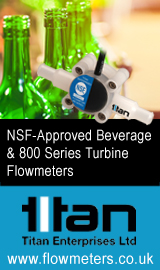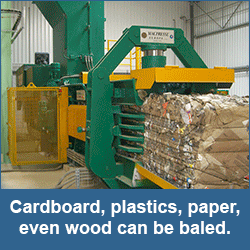How Much are Minute Carbon Dioxide Leaks Costing Your Company?
There is hardly a week goes past when the inflation rate and the rising living costs are not in the news headlines. Increases are due largely on material cost increases during manufacture. Whilst these increases have varied widely, depending on the product in question, few raw materials will have increased as much as carbon dioxide gas. According to the Energy and Climate Intelligence Unit, the price of CO2 rose by as much as 3,000% in 2022. Several different factors were to blame for the increase but clearly the ongoing war in Ukraine is a key attributing factor. But the increased price is only part of the issue. During recent years, there have been significant shortages of the gas for use across various industries. In Europe a major portion of CO2 comes from making ammonia for fertilizer, but the escalating cost of natural gas, due to geopolitical changes, has caused manufacturers to scale back production with one industry observer stating that up to 70% of production has been affected.

As the largest user of CO2 across the globe, the food and beverage industry has been severely affected by both escalating costs and availability of carbon dioxide gas. The beverage industry alone consumes more than a quarter of the global CO2 production every year. Add the food segment into the equation and the figure increases significantly.
As a result of these issues, the food and drinks industry is exploring all possible ways of reducing CO2 consumption. Often stored in bulk tanks, the gas is delivered to various points of use via steel lines often generically referred to as air lines. Traditionally these air lines contain a significant number of screw connections, elbow joints, reducers etc. All these can be prone to leaks over time, allowing gas to escape into the working environment. A single leak might not be considered very significant but as lines get older, it is not uncommon for many joints to develop small leaks that cumulatively give rise to a significant loss of gas. In most centralised systems, the compressor will compensate for the loss by working harder, ensuring that pressure is maintained, therefore drawing more gas from the bulk tank. Of course, although production might not be affected in terms of quality, the issue certainly reduces overall efficiency and negatively impacts the all-important bottom line. Another issue that is often overlooked is related to health and safety. As carbon dioxide gas is 1.5 times heavier than air it has the potential to be a health hazard amongst workers in confined spaces. As the gas is colourless and odourless detection can be difficult and the deadly hazard goes unnoticed.

These problems are compounded as the lines delivering the gas are often in hard-to-reach locations such as elevated positions coupled with the fact that they are frequently situated in noisy environments making leak detection extremely difficult.
FLIR Teledyne are pleased to announce the launch of the new FLIR Si2-LD acoustic imaging camera. Following on from the highly successful Si124, the camera forms part of the FLIR Si2 next generation of imaging cameras with a specific focus on air and gas leak detection. The camera works on the principle that even the smallest of gas leaks has an associated noise. The highly sensitive microphones on the FLIR Si2-LD can detect even the slightest of sounds with an extremely high degree of accuracy and precision. Compared to its predecessor, the FLIR Si2-LD represents a quantum leap in terms of gas leakage detection and overall performance. For those hard-to-reach areas, detecting gas leaks is no problem with the extensive range of the FLIR Si2-LD. At 10 metres the acoustic camera can detect gas leaks as small as 0.05 litres per minute. At a distance of 2.5 metres the camera is capable of detecting minute leaks down to 0.0032 litres per minute. Difficult to reach areas of a production plant are often dark or dimply lit. For this reason, the FLIR Si2 comes complete with two extremely powerful LED lights that illuminate the area, allowing specific gas lines to be identified and analysed.
A new high definition five-inch 1280 x 720 screen which is both sharper and brighter than the FLIR Si124 brings alive the images captured by the 12MP camera with its 8x zoom lens.

Of course, FLIR recognise that senior management will want to quantify the gas leaks in terms of a monetary value. A key feature of the FIR Si2 is the camera’s ability to not only detect the gas but to quantify the leakage rate and furthermore calculate the economic penalty. Termed Industrial Gas Quantification, the incorporated software can calculate losses for a variety of gaseous systems including ammonia, nitrogen, helium, hydrogen, argon, compressed air and of course carbon dioxide. This unique software coupled with the new advanced features of the FLIR Si2-LD provide valuable information regarding gas leaks enabling the maintenance engineer to perform remedial action that has an immediate and lasting effect on the company’s bottom line.
To find out more about this exciting new acoustic camera and other new developments within the FLIR product line contact your local Teledyne FLIR agent.
David Mills
07512 302690
david.mills@teledyne.com

































